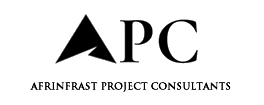
Discover how AEC firms can adopt AI efficiently, effectively, and ethically—boosting productivity while meeting new EU AI regulations
Our industry is under increasing pressure to deliver faster, with fewer resources. A challenge exacerbated by labour shortages, rising costs, and complex regulations.
Luckily, AI is here. By harnessing AI-powered solutions, firms can offload repetitive tasks and allow teams to focus on what they do best: creating, innovating, and delivering high-quality projects. Here’s how:
1. Leverage predictive analytics to study past projects, safety incidents, and material usage. The result: more accurate project timelines, more efficient supply chains, and more effective cost forecasts.
2. Use generative AI to instantly create design options based on client needs, like energy efficiency, cost constraints, and sustainability goals.
3. Deploy AI-powered robotics to automate repetitive construction processes, improving efficiency and safety on-site.
4. Implement digital twins to enhance construction safety, minimise waste, and optimise building performance over time.
Considerations when adopting ethical AI for your AEC firm
But adopting and making the most of AI isn’t easy. It demands a cultural shift in an industry that, historically, has been slow to embrace digital transformation. And firms must balance the potential it offers with ethical considerations such as data privacy and accountability.
As Usman Shuja, CEO of Bluebeam, says: “Artificial intelligence (AI) is at the forefront of our world, but its future positive evolution is dependent on emphasising ethical applications and regulatory oversight at all levels. As leaders, we must proactively address ethical challenges such as algorithmic bias, data privacy, and the need for transparency to ensure AI serves as a force for good.”

In tandem with our first suite of AI-powered tools – designed to boost efficiency and reduce errors – we’ve published a comprehensive guide on how AEC firms can adopt AI the right way. And, in turn, unlock its full potential. Here’s a preview of what’s inside:
1. Preparing your business
Adopting AI in the AEC industry isn’t as simple as installing new software. It requires strategic planning, leadership alignment, and cultural readiness. Roadblocks such as resistance to change, lack of AI expertise, poor data infrastructure, and ethical concerns can slow down adoption, making preparation a crucial step for success.
2. Principles for ethical AI
Ethical AI ensures that you use it in a transparent, fair, and accountable way. To help firms navigate this new field, we’ve developed six principles for using AI ethically. From creating transparency and accountability to driving reliable results that don’t compromise project safety, by embedding these principles into AI strategies, you can mitigate the risks while maximising efficiency gains.
3. The EU AI Act for AEC leaders
In January 2025, the European Union’s Artificial Intelligence Act came into effect, establishing the world’s most comprehensive regulatory framework for AI. If you’re a leader, this means you’re now responsible for AI outputs, auditing training data, and maintaining human oversight. In such a high-risk industry, where errors and misuse can have catastrophic results, the EU AI Act is an essential pillar of your AI transformation.
4. Creating long-term, positive impact
While ethical AI focuses on moral and regulatory safeguards, responsible AI goes further by considering the long-term consequences, governance structures, and risk mitigation strategies. For AEC firms, it means making sure AI models are trained on diverse datasets, continuously evaluating AI performance, and simulating “what-if” scenarios. Getting this right means better, longer-lasting results, fewer risks, and a chance to become a leading example in the industry’s AI transition.
5. Adopting AI effectively and efficiently
Just like any other transformative technology, AI requires structured implementation. Based on our first-hand experience, we’ve created a 7-step process, starting with upskilling your workforce and aligning leadership, and ending with long-term iteration. Given how fast AI is changing, this last step is crucial if you want to effectively adopt AI today and keep up with it in the future.
6. Accelerating your AI journey
Bluebeam is the number #1 AEC Software – trusted by 3M+ professionals around the world. As a leader, we’ve already launched our first AI tool, Auto-align, that eliminates the time-consuming task of manually aligning drawings. For your firm, Bluebeam offers a fast track to the world of AI, increasing efficiency, reducing errors, and improving collaboration.
For the full guide on adopting AI effectively, efficiently, and ethically – visit Bluebeam today. It’s free.
*Please note that this is a commercial profile.
The post Ethical AI for efficient and effective use in construction appeared first on Planning, Building & Construction Today.

